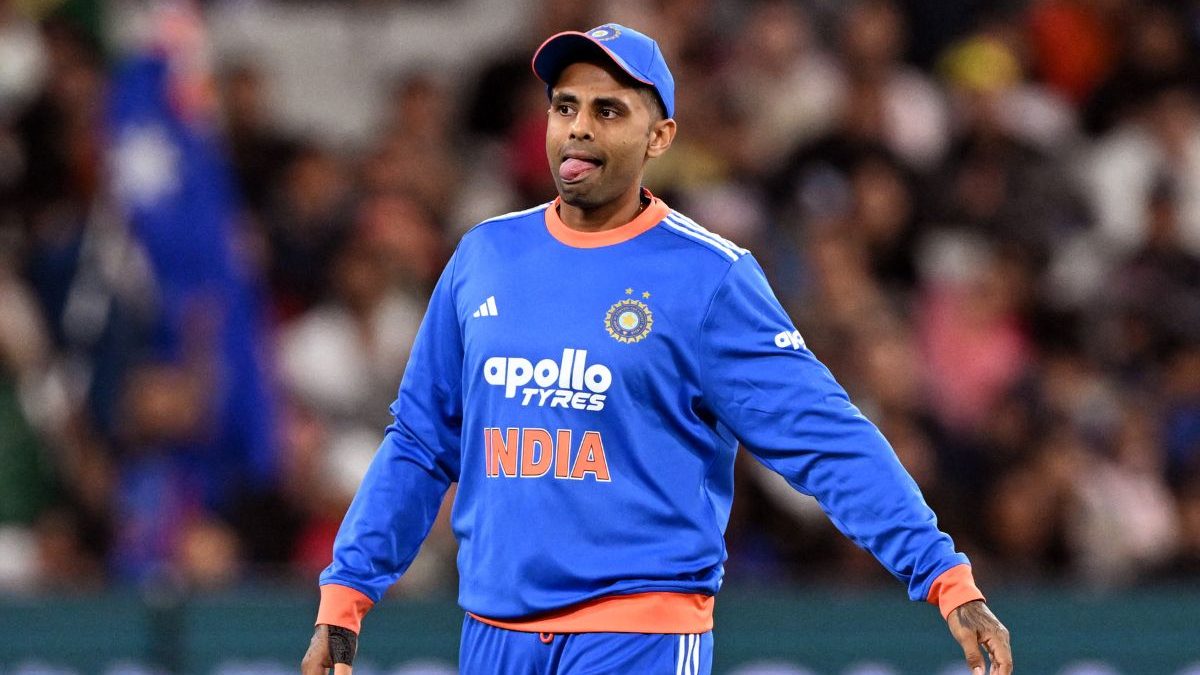The United States has entered yet another month of its prolonged government shutdown as millions of low-income families remain on edge over whether they will receive their monthly food assistance.
On Friday, two US federal judges issued nearly simultaneous rulings, ordering the Trump administration to continue disbursing funds for the Supplemental Nutrition Assistance Program (Snap), commonly known as food stamps.
The rulings — one from Massachusetts and another from Rhode Island — have temporarily forced the administration to use emergency or contingency funds to sustain the nation’s largest food aid programme, even as political wrangling over the shutdown continues in Washington.
Still, the decisions have left lingering uncertainty about how the aid will be delivered in November, how much will be provided, and for how long such emergency financing can last.
What both the rulings said
The two rulings were handed down within minutes of each other, each challenging the administration’s attempt to halt Snap disbursements.
US District Judge Indira Talwani in Boston and US District Judge John J McConnell in Providence both found that the government’s suspension of food aid during the shutdown violated its legal obligations.
Talwani ruled that halting Snap was “unlawful,” concluding that the administration must use contingency funds to sustain the programme.
Her written decision stated, “Defendants’ suspension of Snap payments was based on the erroneous conclusion that the Contingency Funds could not be used to ensure continuation of Snap payments. This court has now clarified that Defendants are required to use those Contingency Funds as necessary for the Snap programme.”
Talwani’s decision responded to a lawsuit filed by 25 Democratic-led states and the District of Columbia.
These states argued that the federal government not only had the authority but also the duty to use available emergency reserves to prevent hunger among citizens during the shutdown.
Impact Shorts
More ShortsIn Rhode Island, McConnell delivered a parallel ruling in a case brought by municipalities, nonprofits, and labour groups. He pointed out the human consequences of pausing food assistance, stating during a virtual hearing.
“There is no doubt and it is beyond argument that irreparable harm will begin to occur if it hasn’t already occurred in the terror it has caused some people about the availability of funding for food, for their family.”
McConnell ordered that Snap continue to be funded using emergency reserves and directed the administration to report back to the court by Monday with an update on how it plans to comply.
How much Snap costs Washington
Snap is the largest federal nutrition programme in the United States and serves as a critical lifeline for food-insecure households.
It currently supports approximately 42 million Americans — about one in every eight citizens. On average, the programme costs nearly $8 billion each month, according to government estimates.
The programme, which replaced the traditional “food stamp” system years ago, provides electronic benefit transfer (EBT) cards to participants, allowing them to buy essential grocery items at supermarkets, convenience stores, and even through online retailers such as Amazon.
The benefits are reloaded monthly and are administered by state governments with federal funding support.
Data from the US Department of Agriculture (USDA) show that, in 2023, nearly three-quarters of Snap households had gross monthly incomes at or below the poverty line.
For a family of four in 2025, the net income cap to qualify for Snap assistance after expenses is roughly $31,000 per year.
Despite the broad reach of the programme, individual assistance levels remain modest. The average Snap payout amounts to about $6 per person per day — a figure that often forces households to stretch every dollar to cover basic nutritional needs.
How the shutdown triggered the food crisis
The current shutdown began at the start of October after Congress failed to pass a new budget bill. With no approved federal funding, agencies across the government began closing or operating under emergency protocols.
By late October, the USDA announced that it could no longer sustain Snap payments because it had exhausted regular funding streams. Officials stated that the programme would cease issuing benefits beginning November 1.
The department argued that without a congressional budget, it lacked authority to use other funds to continue the programme.
In a post dated October 26 on the USDA’s website, the department stated bluntly, “Bottom line, the well has run dry. At this time, there will be no benefits issued November 01.”
This announcement sparked immediate backlash from governors, attorneys general, and anti-hunger advocates, who accused the administration of unlawfully withholding aid. Many pointed to USDA’s own earlier contingency plans that had indicated emergency reserves could be tapped to sustain Snap if Congress failed to act.
The abrupt reversal prompted the coalition of Democratic-led states and nonprofit organisations to sue, arguing that the administration’s refusal to use contingency funds violated its statutory obligations under the programme.
What emergency reserves can be used for Snap
At the heart of the dispute lies the question of whether the USDA can lawfully draw on its contingency and reserve funds during a funding lapse.
These accounts — established by Congress to handle emergencies and ensure continuity of key social programmes — contain billions of dollars in unused balances.
The USDA currently holds about $5 billion in a contingency fund designated for Snap. While that sum could only cover roughly 60 per cent of a month’s worth of benefits nationwide, according to the Center on Budget and Policy Priorities, plaintiffs argued it was still sufficient to prevent a total halt in assistance.
Democratic attorneys general further contended that a separate reserve fund containing approximately $23 billion was also available for use, if the administration authorised access.
In court filings, the Trump administration insisted that drawing from those funds would exceed its legal authority. Officials maintained that Congress had not explicitly approved their use under current shutdown conditions.
However, both Talwani and McConnell rejected that argument. Talwani stated that contingency funds had been lawfully used in previous shutdowns to sustain Snap.
McConnell’s ruling similarly stated that at least one of the available funding streams must be used to prevent mass hardship among recipients.
How Trump & Co. have responded
US President Donald Trump reacted publicly to the rulings just hours after they were issued.
Posting on his Truth Social platform, he reiterated his position that the administration’s hands were tied legally, but he expressed willingness to follow the courts’ directives once clarified.
“Our Government lawyers do not think we have the legal authority to pay Snap with certain monies we have available, and now two Courts have issued conflicting opinions on what we can and cannot do,” Trump wrote.
“I do NOT want Americans to go hungry just because the Radical Democrats refuse to do the right thing and REOPEN THE GOVERNMENT. Therefore, I have instructed our lawyers to ask the Court to clarify how we can legally fund Snap as soon as possible.”
Earlier in the day, at a press conference on Capitol Hill, US Agriculture Secretary Brooke Rollins said the contingency funds in question would not sustain the programme for long.
Appearing alongside US House Speaker Mike Johnson, Rollins criticised Democrats for their refusal to end a Senate filibuster to pass a broader funding package.
She described their stance as a “disgusting dereliction of duty” and accused them of prioritising political messaging over feeding Americans.
Democrats, however, accused the administration of weaponising food assistance to force their hand.
“The administration is choosing not to feed Americans in need, despite knowing that it is legally required to do so,” said US Senator Amy Klobuchar of Minnesota, the ranking Democrat on the Senate Agriculture Committee.
What the ruling means for families and food banks
Because the process of reloading EBT cards takes several days to over a week in many states, recipients are unlikely to see funds arrive immediately, even if the USDA complies with the orders.
Food banks and local aid organisations have been working overtime to fill the gap. Cynthia Kirkhart, CEO of Facing Hunger Food Bank in Huntington, West Virginia, said her team extended operating hours to meet surging demand.
“What we know, unless the administration is magical, is nothing is going to happen tomorrow,” she told AP.
Kristle Johnson, a Florida nursing student and single mother of three, described her growing anxiety about the potential for reduced benefits. Despite meticulous budgeting, she told AP that her $994 monthly Snap allocation barely covers the essentials.
“Now I have to deal with someone who wants to get rid of everything I have to keep my family afloat until I can better myself,” Johnson said, referring to Trump.
Nonprofit leaders have also warned of widespread chaos if benefits were to lapse.
“Thousands of nonprofit food banks, pantries and other organisations across the country can avoid the impossible burden that would have resulted if Snap benefits had been halted,” said Diane Yentel, president and CEO of the National Council of Nonprofits, one of the plaintiffs in the Rhode Island case.
The longer the shutdown persists — now entering its 32nd day — the more severe the impact will be on families and local economies that depend on Snap.
Retailers who accept EBT cards have also expressed concern about potential disruptions in spending patterns if payments are delayed or reduced.
What next for the future of Snap
This is the first time in US history that Snap has come close to suspension due to a budget standoff. The shutdown is already on its way to become the longest the US has witnessed.
The Trump administration has used the shutdown to advance its broader agenda of downsizing federal agencies and limiting welfare programmes.
Critics, however, say the administration is using hunger as political leverage. Plaintiffs in both court cases claimed that the administration’s actions were designed to pressure Democrats into compromising on unrelated legislative issues.
They also noted that before the shutdown began, USDA officials had assured states that emergency reserves would be used to sustain benefits — only to reverse that position days later.
Trump, in his social media post, said it would be “my honour to provide the funding” if the courts issue clear guidance.
For millions of low-income households, Snap remains a vital safety net in uncertain times. Nearly two-thirds of beneficiaries are families with children, while others include seniors, veterans, and individuals with disabilities.
Economists note that Snap is not only a social welfare programme but also a key stabiliser in the economy.
Every dollar spent on Snap benefits typically generates over $1.50 in economic activity through grocery purchases and supply chains. A sudden halt or reduction in benefits could therefore have ripple effects far beyond individual households.
Food insecurity had been declining modestly in recent years but began rising again amid inflation and higher living costs. The current funding crisis threatens to reverse those gains, particularly in rural and low-income urban communities.
With inputs from agencies


)

)
)
)
)
)
)
)
)



